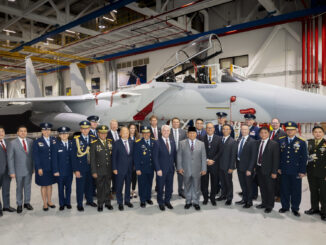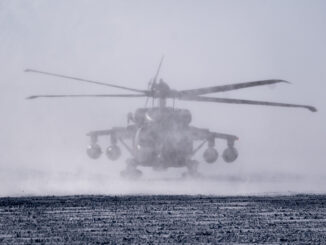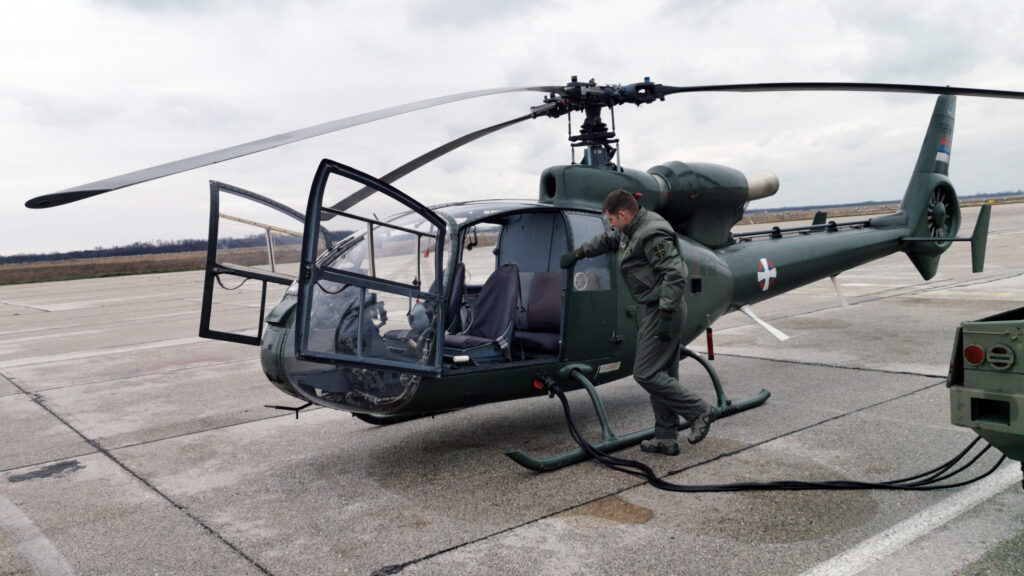 Fifty-six years ago, on 7th April 1967, the first prototype of SA 340 helicopter – later known as Aérospatiale Gazelle – performed its maiden flight. Shortly after, the rotorcraft turned out to be one of the most recognized French-designed aircraft of the 1980s and 1990s.
Fifty-six years ago, on 7th April 1967, the first prototype of SA 340 helicopter – later known as Aérospatiale Gazelle – performed its maiden flight. Shortly after, the rotorcraft turned out to be one of the most recognized French-designed aircraft of the 1980s and 1990s.
Since its introduction to operational service, that utility rotorcraft became one of the most popular light helicopters in the world and finally operated by approximately thirty air forces, several law enforcement and other government-related agencies, as well as civilian companies.
It is also important to emphasize that the Gazelle, due to its participation in numerous conflicts all over the world, has a pretty impressive combat record. Some of these conflicts include French interventions in Chad, Djibouti, Somalia and Cote d´Ivoire, the Gulf War, the Bosnian War, counter-piracy operations in Somalia, the Iran-Iraq War, the Lebanon War of 1982, the Cenepa conflict between Ecuador and Peru, the War in Afghanistan, as well as the Rwandan Civil War – and a lot more.
The Gazelle helicopter was manufactured in France, the United Kingdom, Yugoslavia and Egypt. Until 1996, when its production was finally ceased, more than 1,700 examples of that rotorcraft were built. A detailed history of development and operational service of the Gazelle can be found in our article issued in March of 2022, on the occasion of its fifty-fifth jubilee.
Nowadays, the Gazelle is still operationally used by four European armed forces – the Bosnian and Herzegovinian Air Force, the British Army Air Corps, the French Army, as well as the Serbian Air Force and Air Defence.
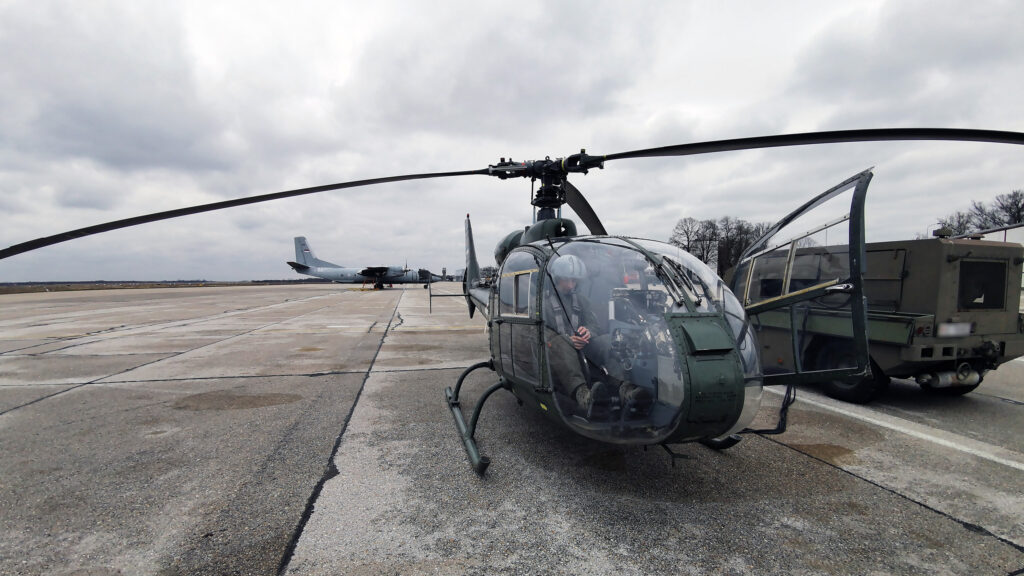
And exactly the Serbian Gazelle helicopters are the ones we examine more closely – and not for the first time. The interesting set of photos disclosed a few weeks ago by the country´s Ministry of Defence is a pretty good reason to do so.
In 1971, Yugoslavia acquired license rights for manufacturing the G and H variants of the Gazelle. Nevertheless, the first twenty-one examples of the Gazelle SA 341G were made yet in France and were just assembled in Yugoslavia. The full domestic production in Yugoslavia was launched only in 1978.
The license was supervised and managed by Aeronautical Technical Institute (Ваздухопловнотехнички институт), the Gazelle rotorcraft were finally assembled at SOKO aviation plant in Mostar, their engines were produced by ´21st May´ factory in Rakovica and other elements were manufactured and delivered by several other Yugoslavian companies.
The Yugoslavian-made Gazelles were designated HO-42 (general-purpose SA 341H), HI-42 Hera (scout variant), HS-42 (medical variant) and HO-45 (general-purpose SA 342L). Nevertheless, the one that attracted the most interest was an anti-armour version, created in 1981.
The Gazelle was equipped with four 9M14M Malyutka, wire-guided anti-tank missiles developed in the Soviet Union, as well as two 9K32 Strela-2M missiles – originally being a MANPADS system of the same origin but here intended for anti-helicopter combat. Those rotorcraft were manufactured in two variants and designated, depending on base variant of the Gazelle, HN-42M Gama (for the SA 341H) and HN-45M Gama 2 (for the SA 342L). Their common name ´Gama´ was derived from abbreviation of Gazelle and Malyutka.
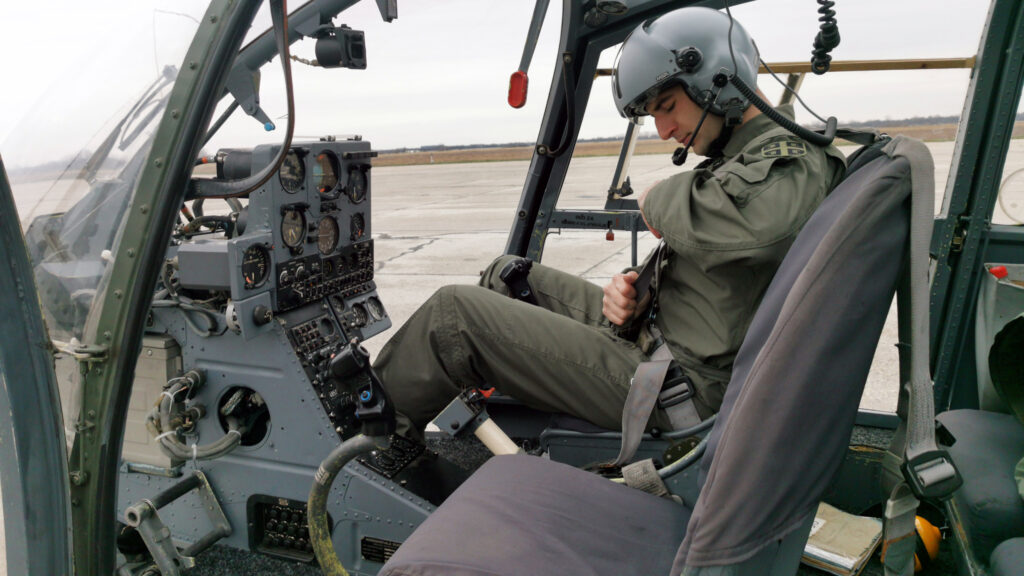
The aforementioned photographs published by the Serbian Ministry of Defence in March of 2023 are showing a flight training day of future Serbian Air Force helicopter pilots, taking place at Colonel Pilot Milenko Pavlović air base in Batajnica.
During that training, military academy cadets of the fourth year performed a series of flights with SOKO Gazelle helicopters over wider area of Belgrade. Both the rotorcraft and flight instructors taking part in the training came from the 890th Mixed Helicopter Squadron ´Pegasi´ of the 204th Air Brigade from Batajnica.
In the Serbian Air Force, such flights with the light, multi-purpose rotorcraft are the initial – and mandatory – stage of cadets´ flight training. The learning programme includes test flights with instructor, landing and take-off procedures performed outside an airfield area and, finally, series of solo flights. Prior to that part of the training, the cadets attended theoretical knowledge course and learned characteristics of the Gazelle helicopter, its construction, radio-navigation equipment and flying techniques. In addition, they had to complete theoretical aerodynamics and meteorology training.
During their fifth, and final, year at the academy, the cadets´ abilities are carefully evaluated by the flight instructors. Then – depending on their skills, performance and also individual preferences – the young pilots will undergo additional training with the abovementioned Gama combat version of the Gazelle, or further practice flights with Mi-17 multi-purpose rotorcraft.
That stage will complete their long education process within military aviation study programme and make the cadets ready to become full duty helicopter pilots of the Serbian Air Force and Air Defence.

All photos © Министарство одбране Републике Србије / MoD Republic of Serbia. MoD press releases were used.


